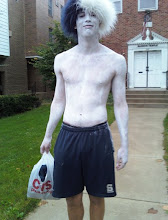I found the second chapter to be slightly less interesting than the first. The beginning of the chapter goes into detail about the origins of the Klu Klux Klan. He describes the hierarchy of the Klan, and how decisions are made. Klan activity is also discussed to a certain point. He then states that the Klan is an organization that derives its power from mass amounts of information. Real estate, he claims, also gets its power in the same way.
The Author continues to elaborate by describing how the real estate business skews and presents information to make buyers more interested. For example, the phrases that describe the condition of the house aren't what you think they may be. Often times phrases such as "good neighborhood" mean the opposite of what you think they would. In this case good neighborhood implies that "this house may not be nice, but the ones near it are". The author also shows how real estate agents often benefit from lowering the prices of the houses that they are selling.
the authors random analysis continues with the analysis of players that appear on the weakest link. For example, minorities such as Mexicans are typical looked at as being poor and are usually eliminated in the first round. In short, the author continues in this chapter by linking and analyzing two random topics and explaining how they are similar to one another. The real estate-Klan link was in my opinion the most interesting from the selection. I also agree with the author that both of these professions are driven by mass amounts of information. In short, this was another good chapter, but i didn't enjoy it as much as i did the first chapter.I found that first chapter was much easier to relate to.
Subscribe to:
Post Comments (Atom)



No comments:
Post a Comment